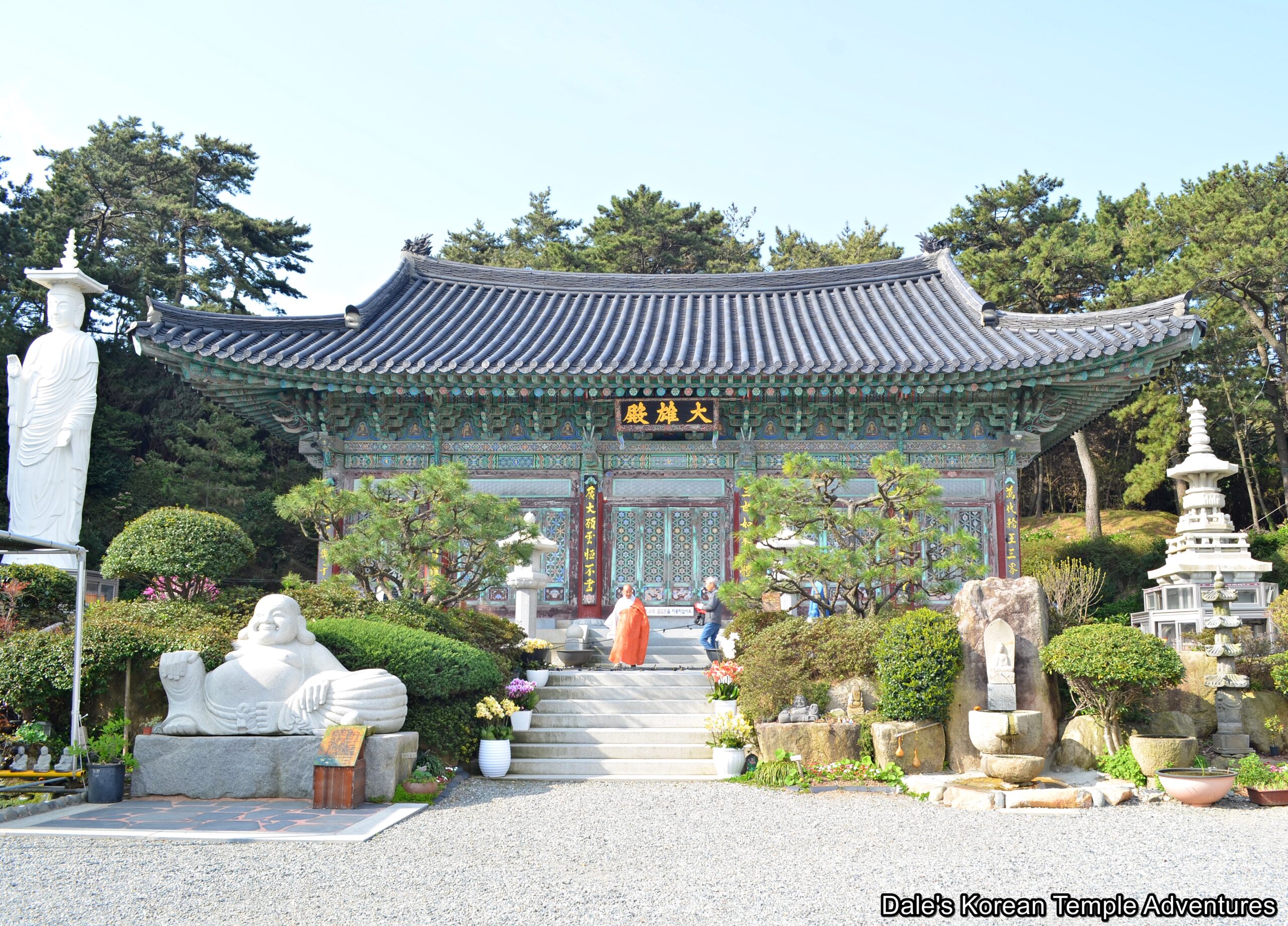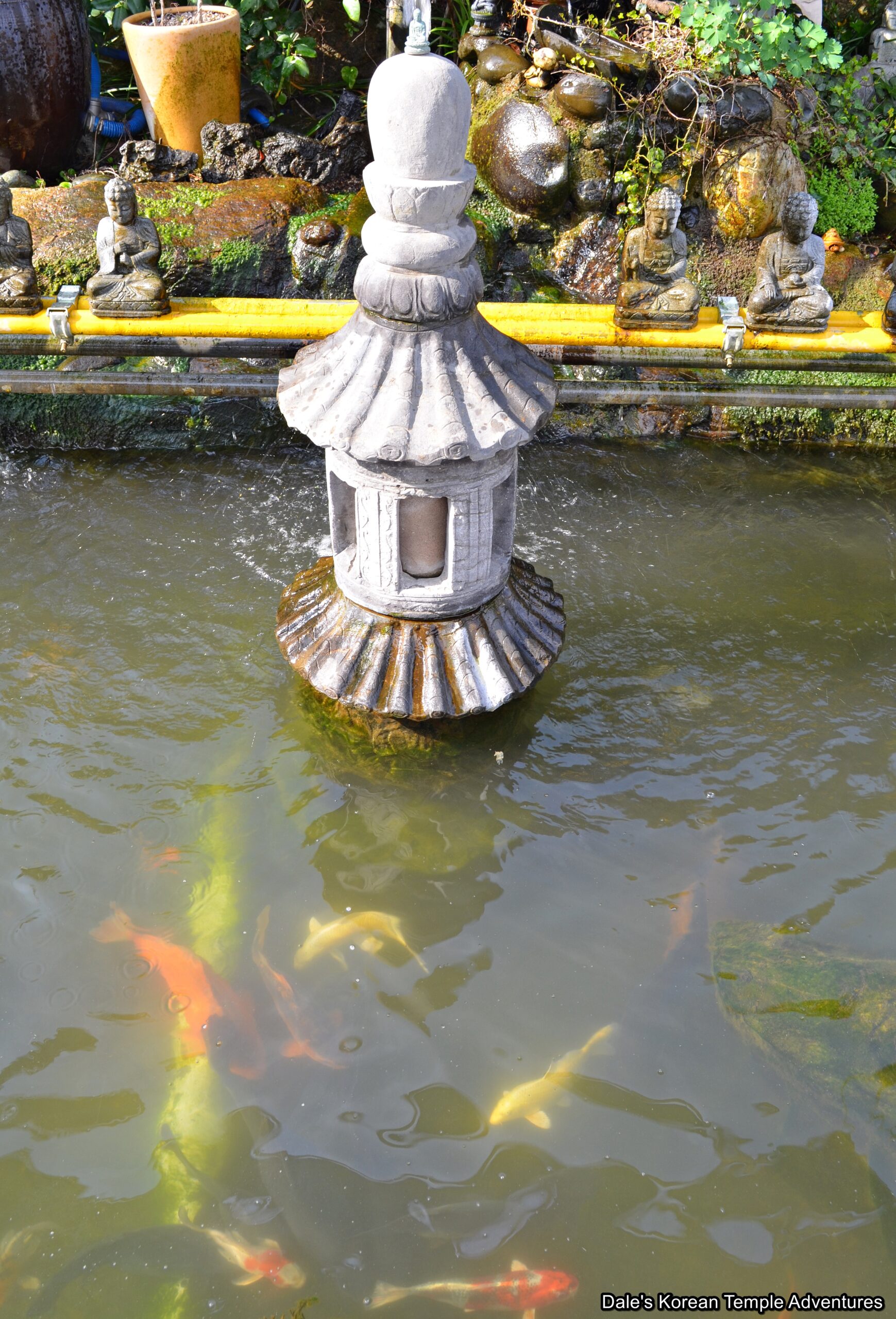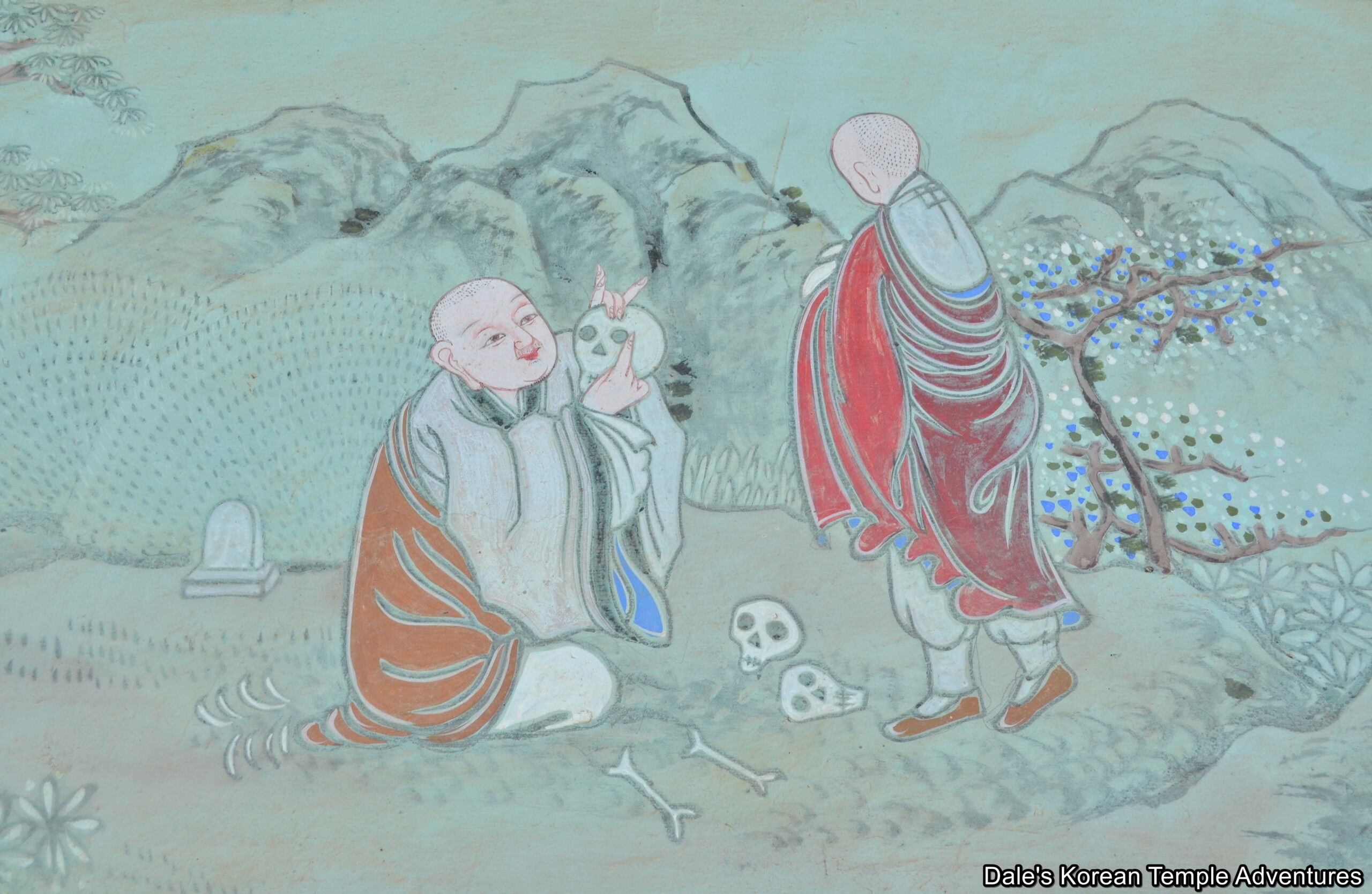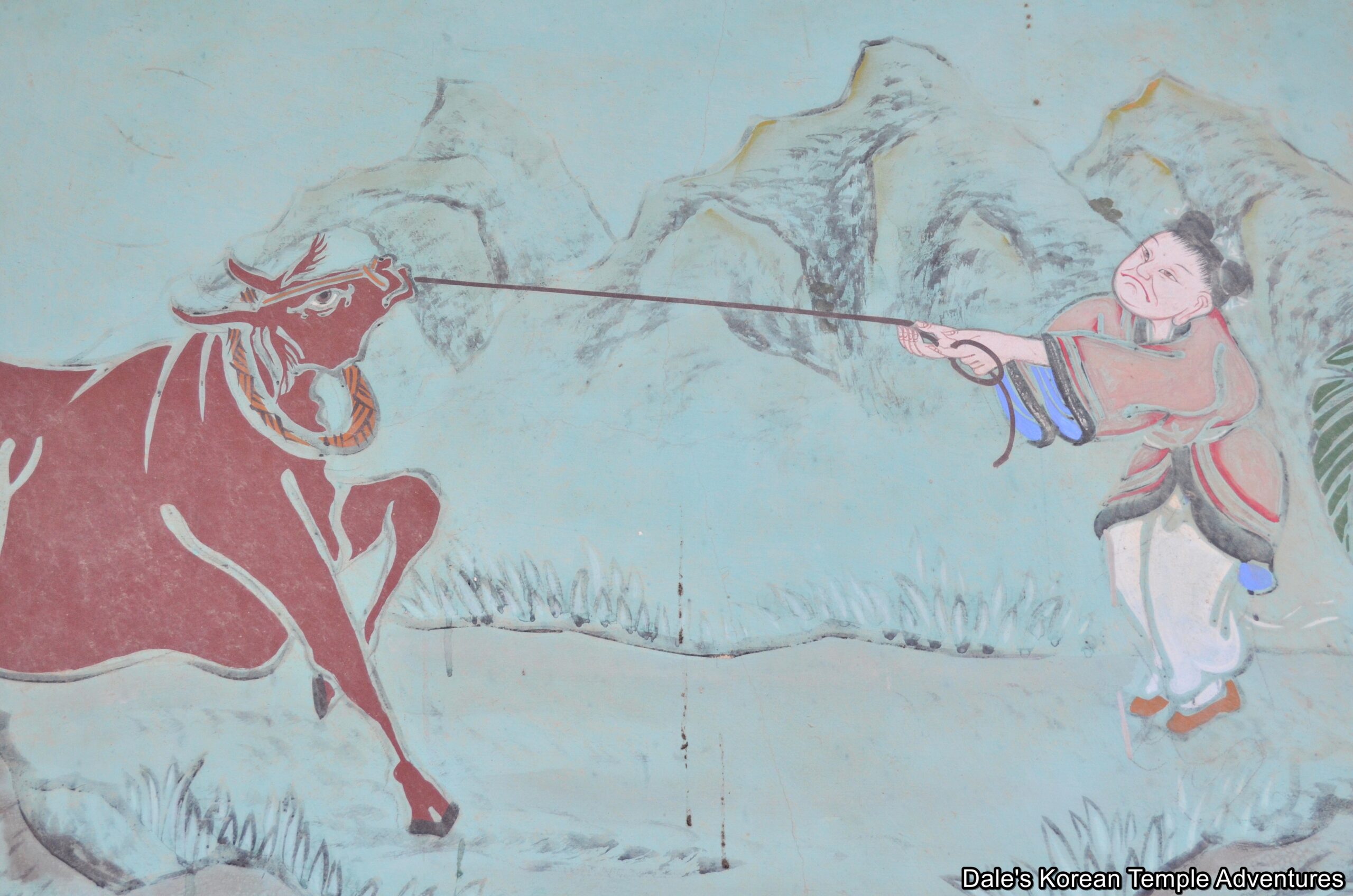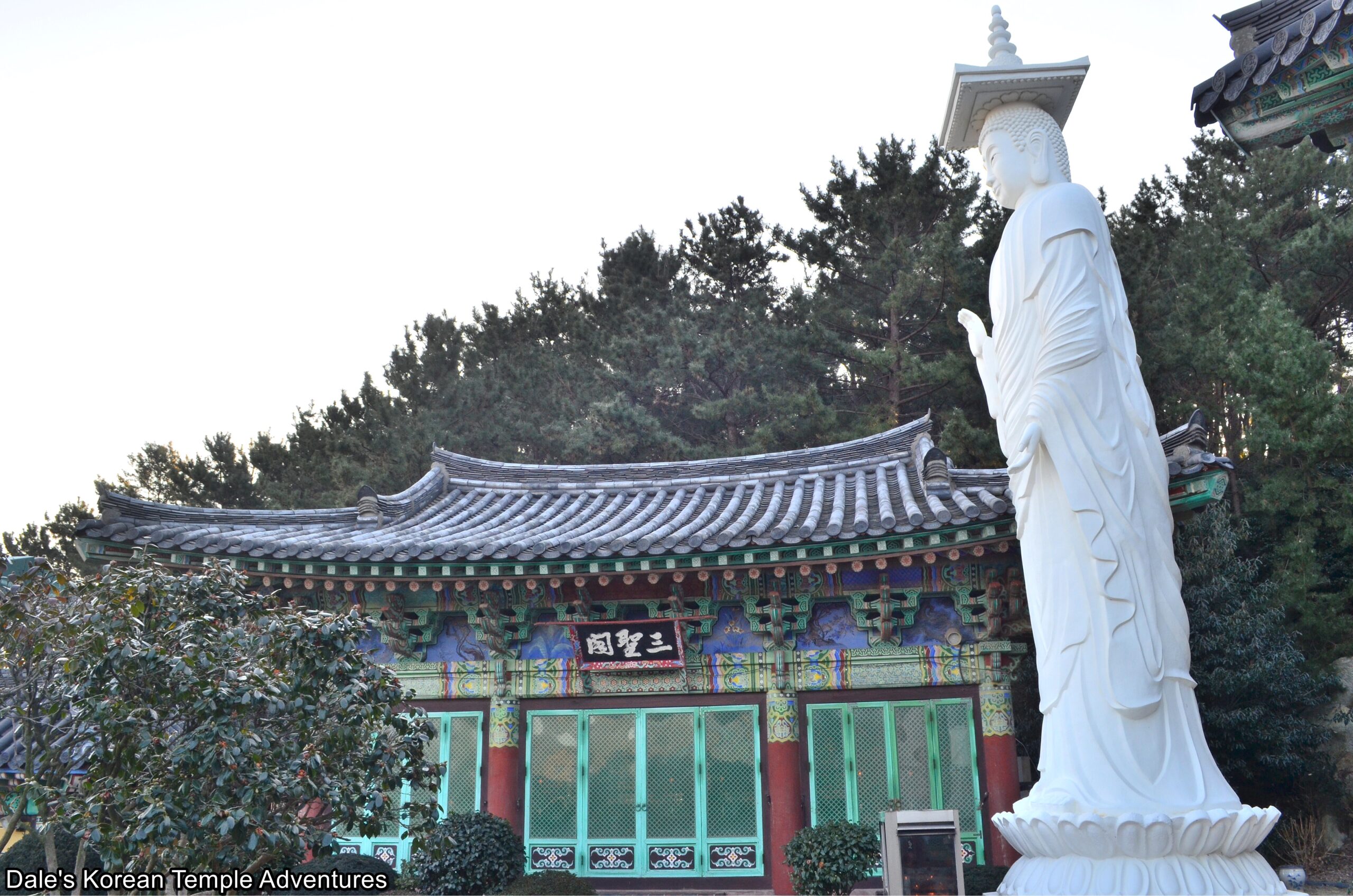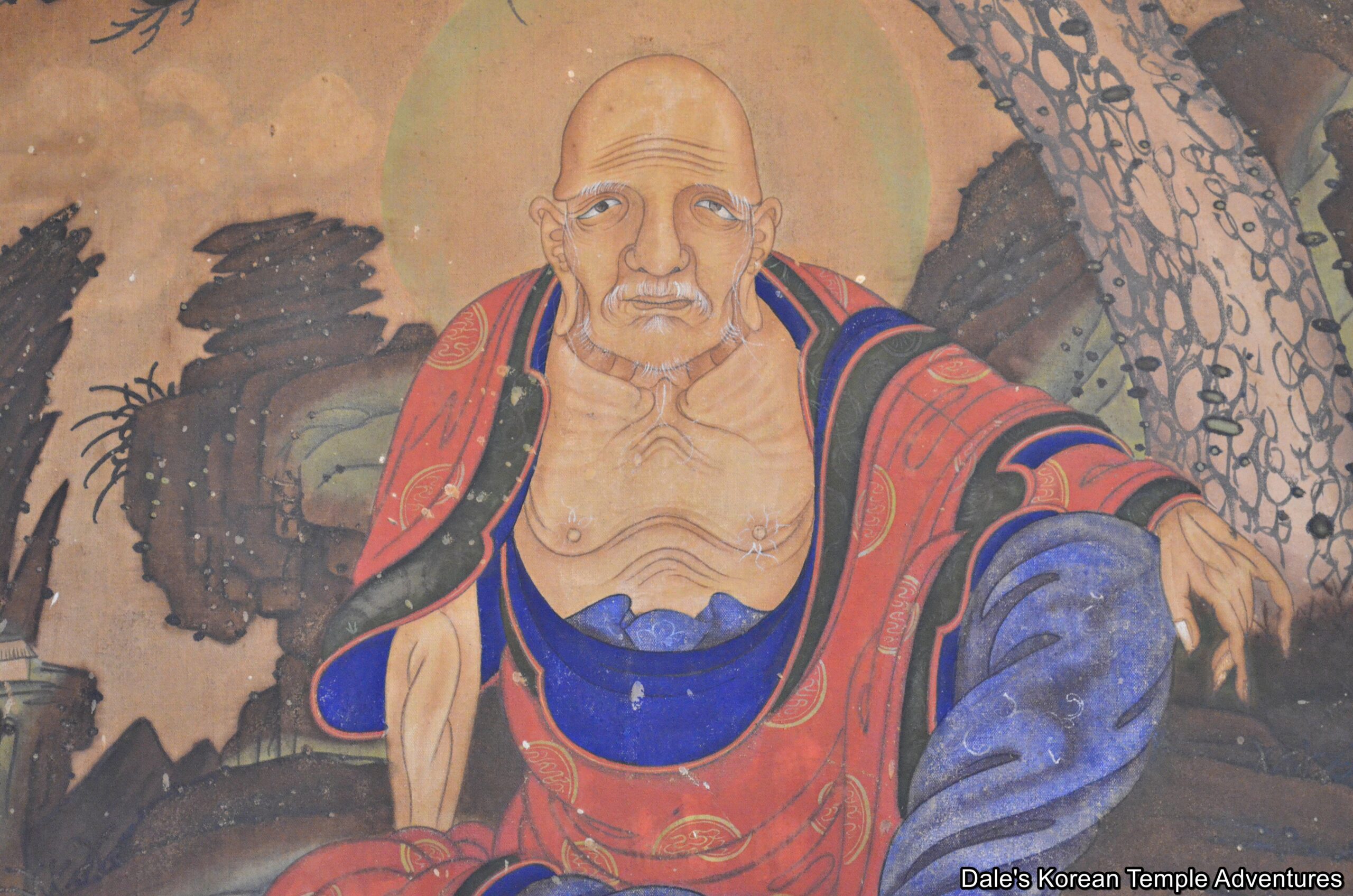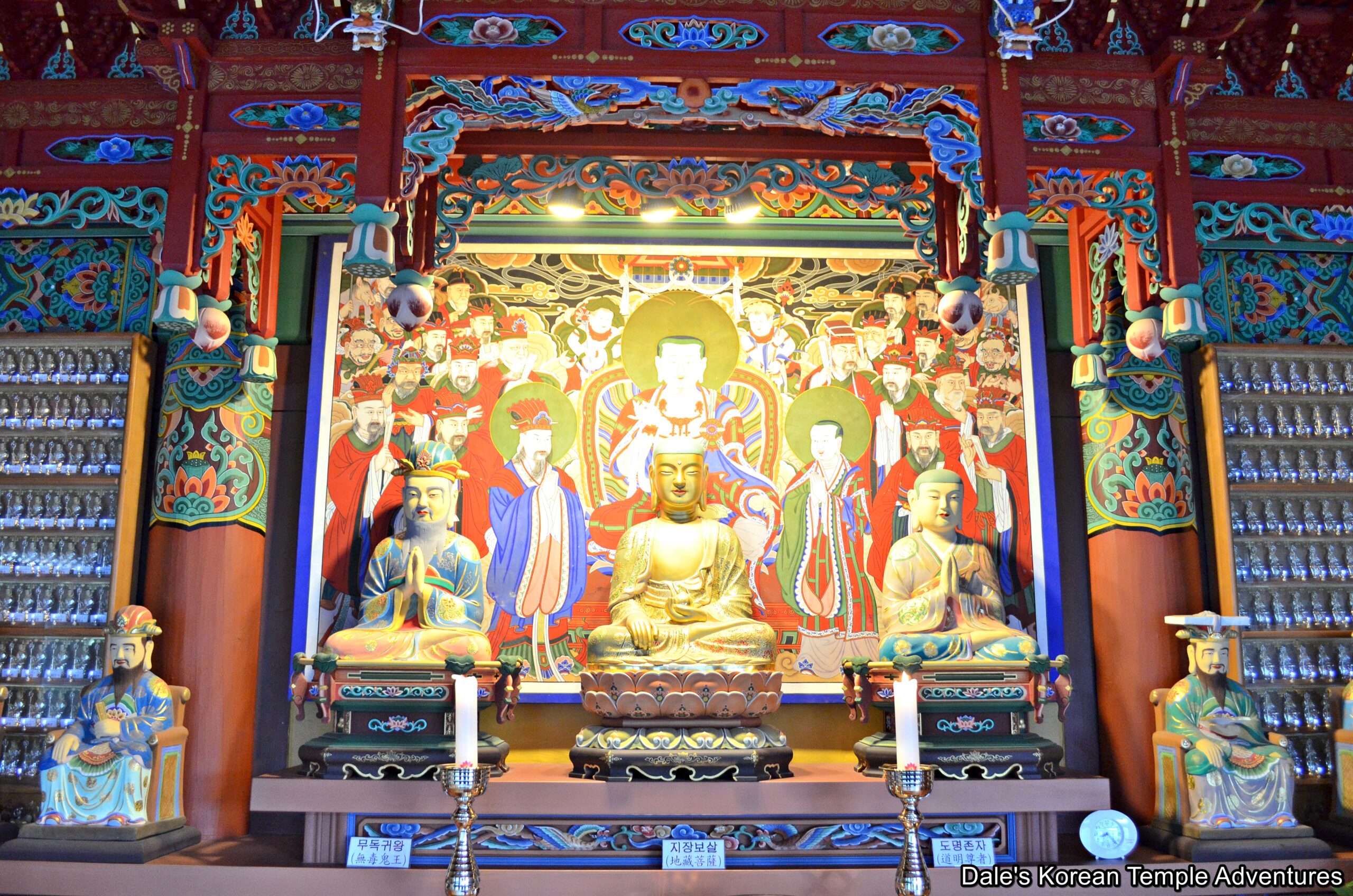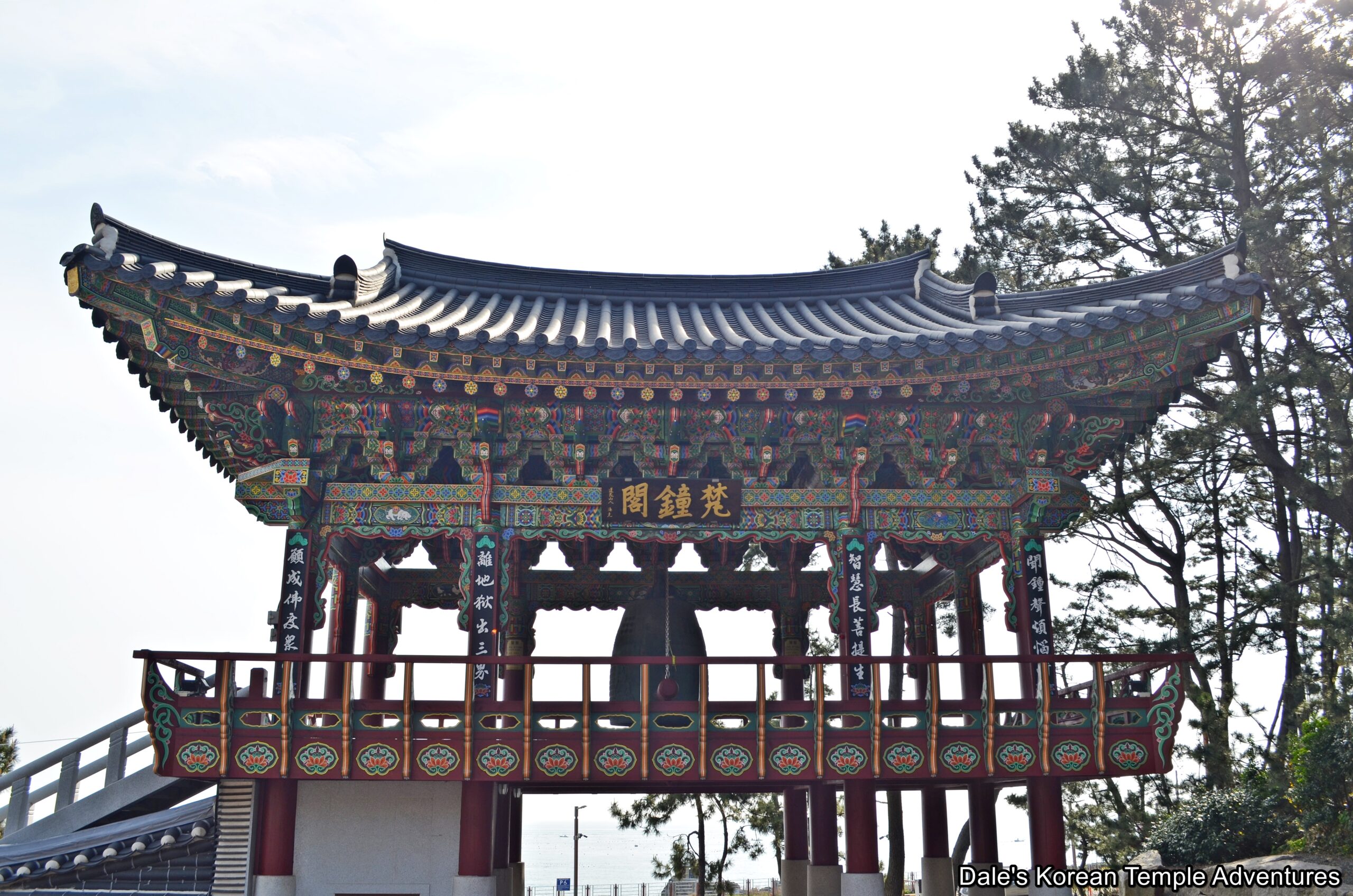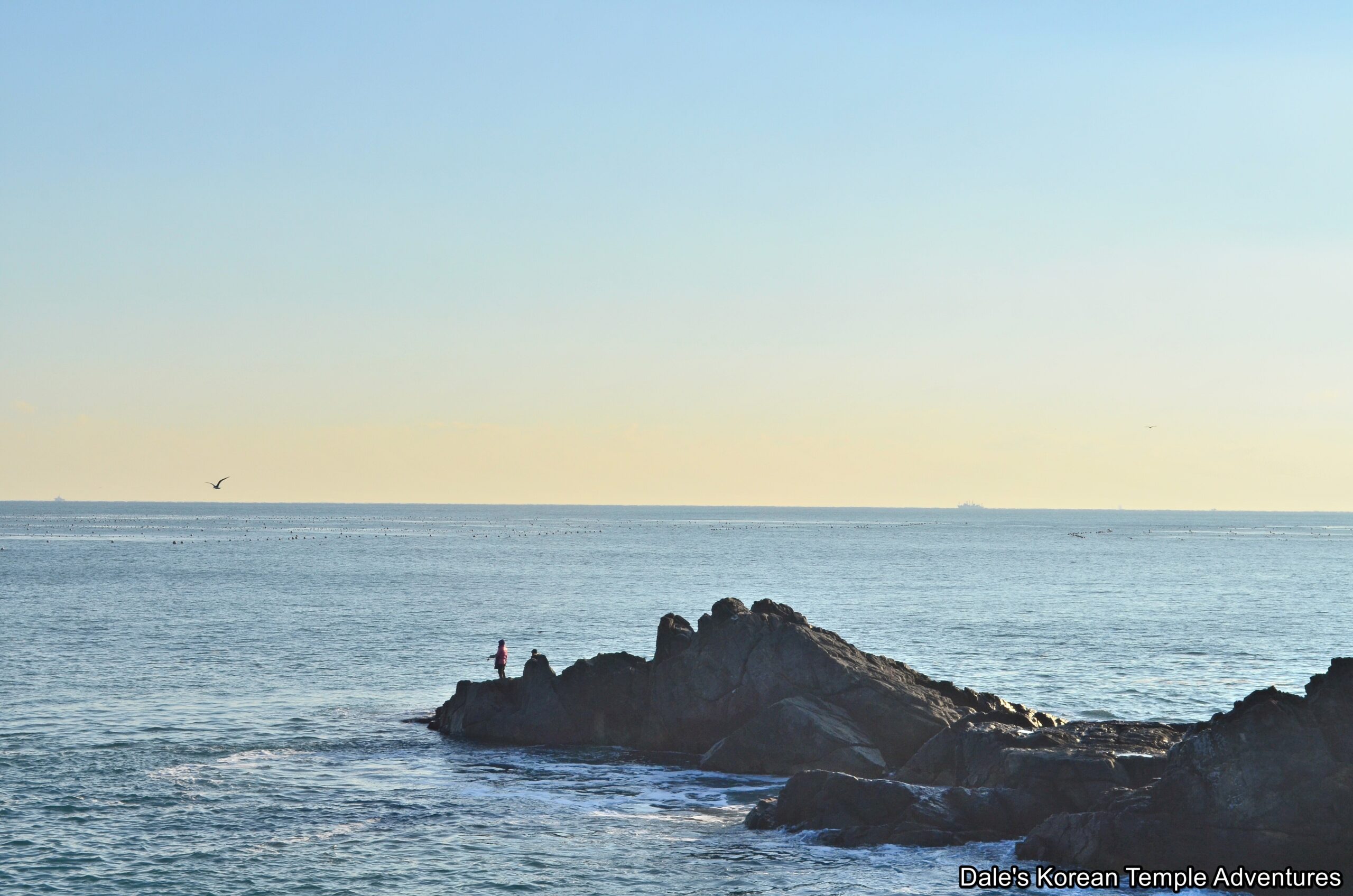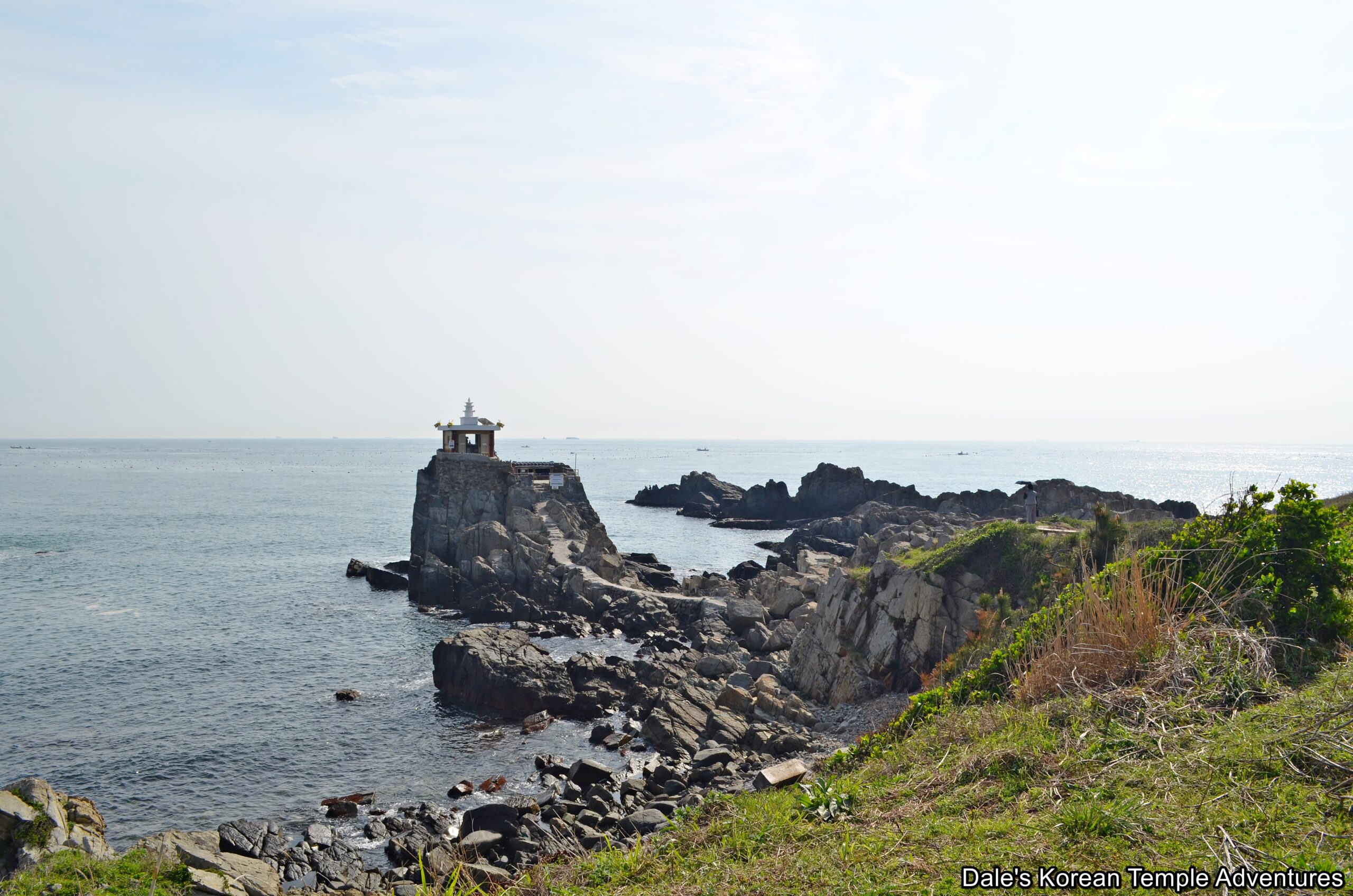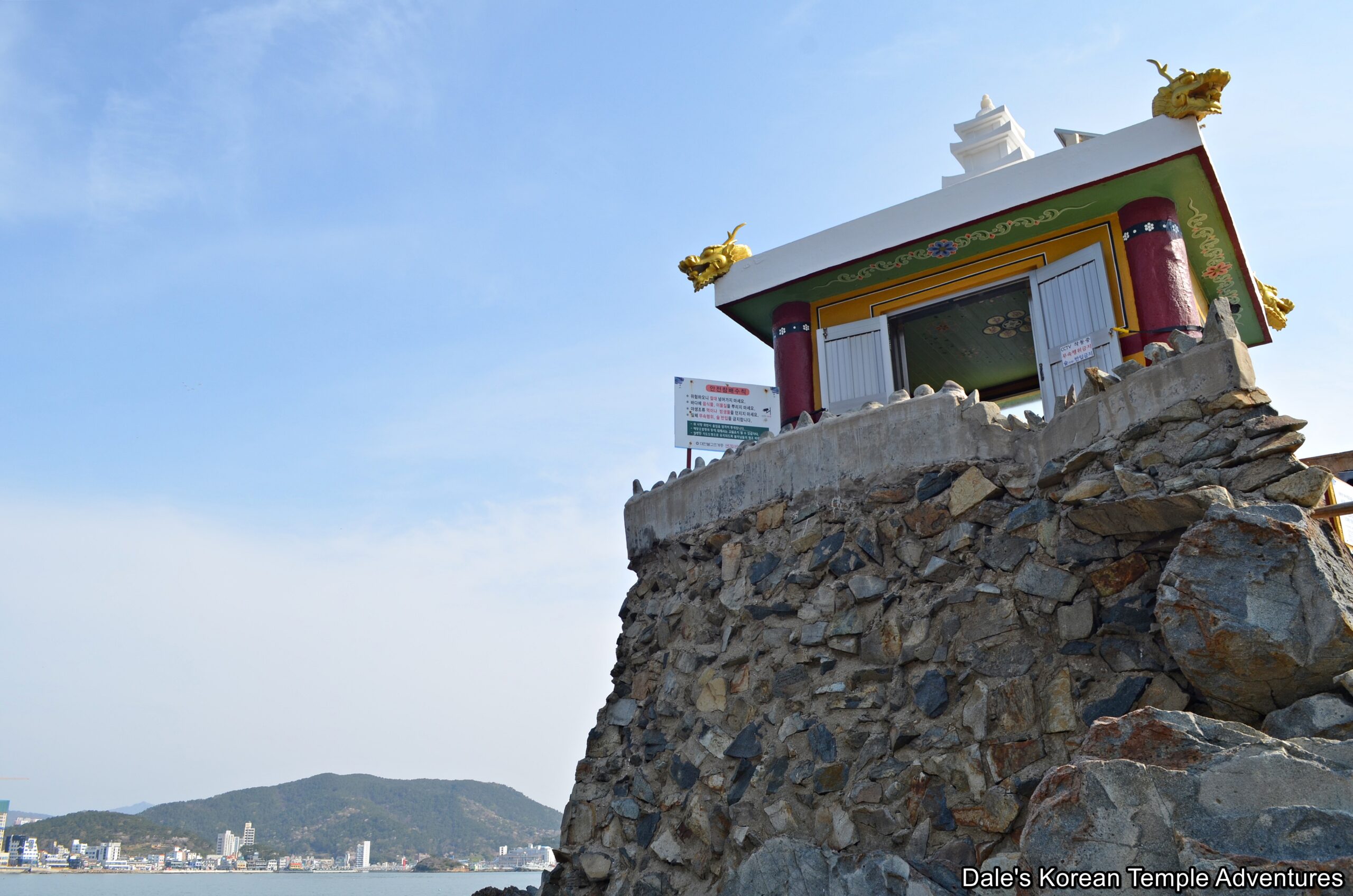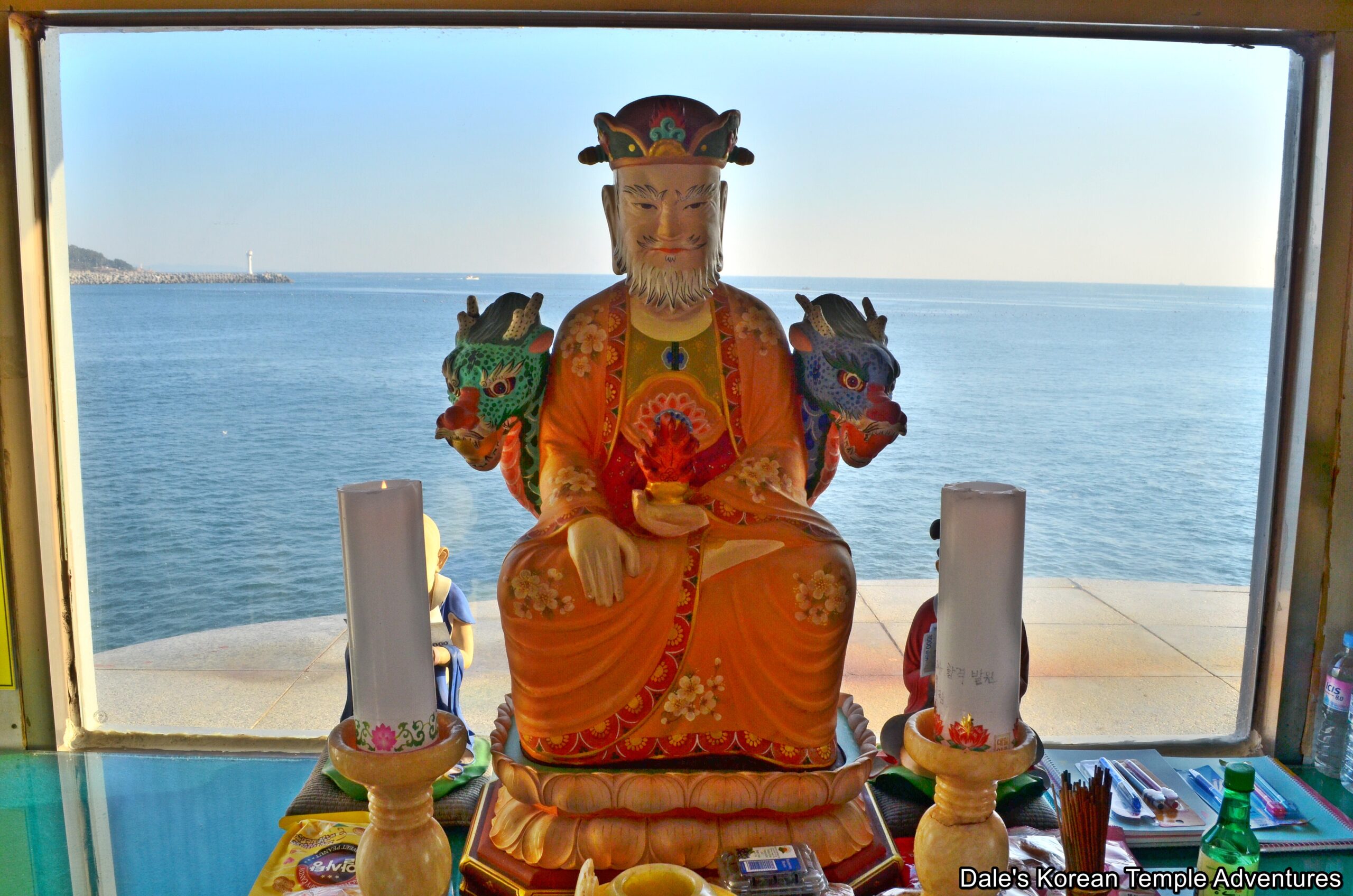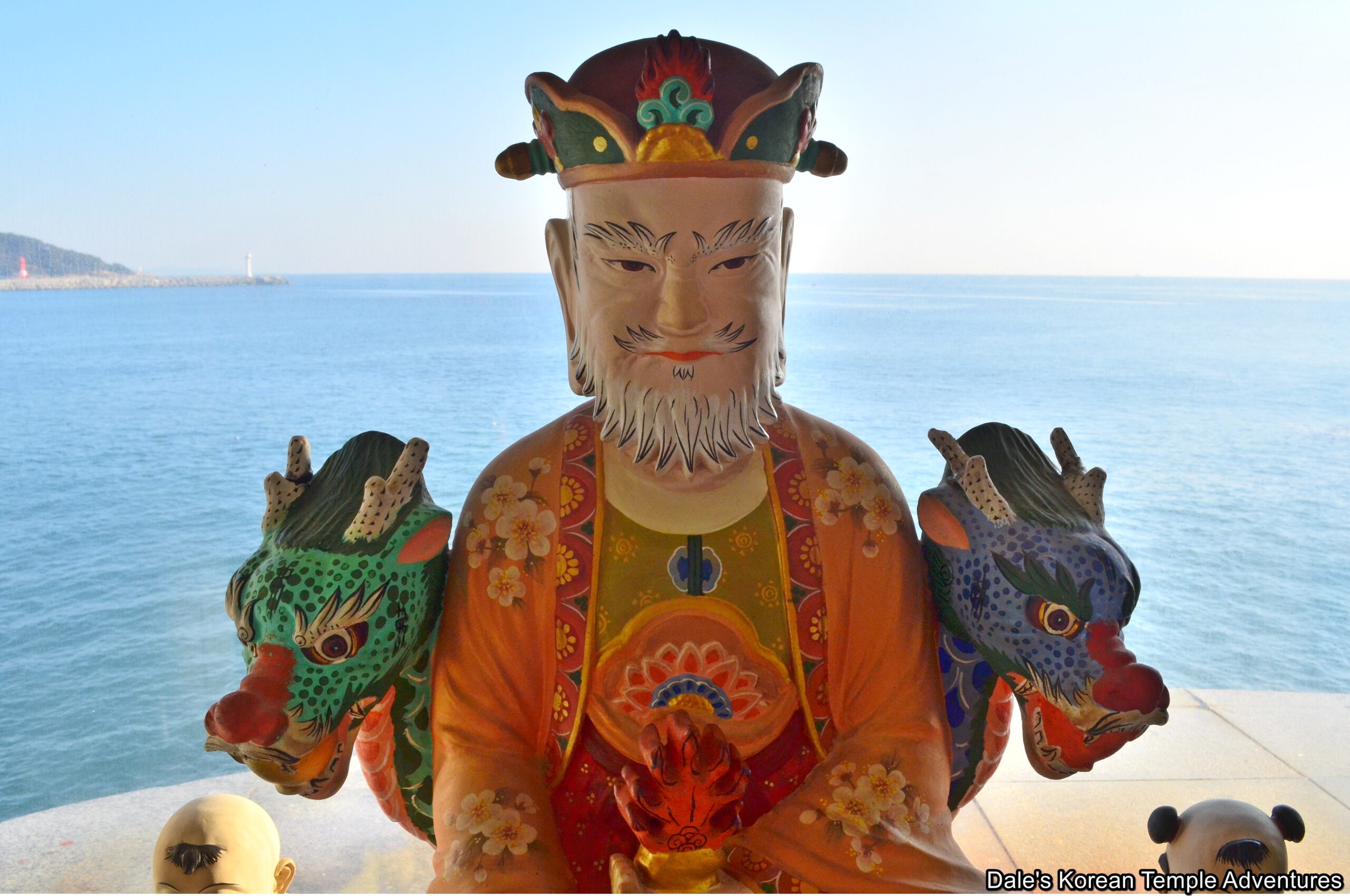Haegwangsa Temple – 해광사 (Gijang-gun, Busan)
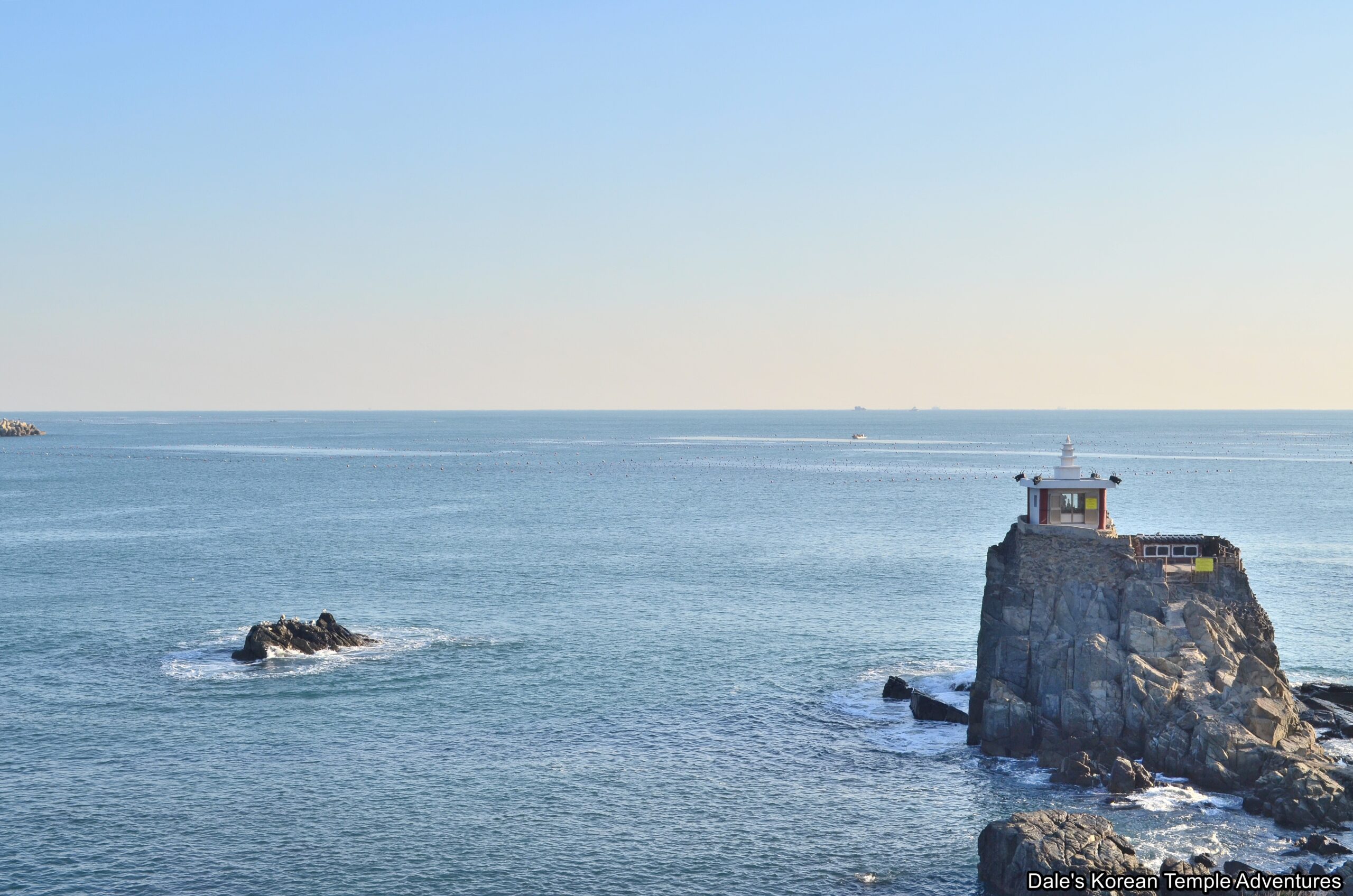
Temple History and Myth
Haegwangsa Temple is a seaside temple located in Gijang-gun, Busan. The temple was first built about one hundred years ago by the monk Kim Mokam-sunim. As for the myth surrounding the creation of the temple, originally Kim Mokam-sunim was a farmer. In fact, the land used for the creation of Haegwangsa Temple used to be his farmland.
One day after finishing up his work, Kim took a shower. It was during this shower that he found a wooden statue of the Buddha, which had drifted up towards him from the sea. As soon as he held and hugged the statue, Kim felt a strange power take hold. Rather strangely, the wooden statue spoke to Kim, saying “I was buried at the temple, deep in the mountain hundreds of years ago, but because of an avalanche, I was swept out into the sea and floated around without a permanent home. Finally, I appeared here, today, as a connection between the past and the present. So place me next to the spring over there.”
When the temple was finally created, it was called Haebulam Hermitage, which means “Ocean Buddha Hermitage” in English. After the temple was created, the wooden statue of the Buddha was placed inside the main hall at the hermitage. However, during Japanese Colonial Rule (1910-1945), the hermitage was looted by the Japanese. In fact, the historic wooden Buddha was stolen by the Japanese at this time. After Korea’s liberation, a monk at the hermitage brought the wooden Buddha statue back to Haebulam Hermitage. But because of preservation issues with the statue, it was badly damaged during its possession by the Japanese. So in an attempt to help preserve the foundational wooden Buddha, it was buried beneath the main hall in 1974, which is where it’s been buried ever since. It was also around this time that the hermitage changed its name from Haebulam Hermitage to its current name of Haegwangsa Temple.
Temple Layout
You first approach Haegwangsa Temple up a bit of a backroad. With the East Sea to your left, you’ll notice Haegwangsa Temple to your right through a pair of buildings that slightly obscure the entry to the temple. It’s through this opening that you’ll enter into the main temple courtyard at Haegwangsa Temple. Straight ahead of you is the Daeung-jeon Hall. Wrapped around the exterior walls to the main hall are an eclectic assortment of murals which include the Shimu-do (Ox-Herding Murals), the Palsang-do (The Eight Scenes from the Buddha’s Life Murals), a mural dedicated to Wonhyo-daesa (617-686 A.D.) and Uisang-daesa (625-702 A.D.), the Bodhidharma, and several other Buddhist inspired murals. Stepping inside the Daeung-jeon Hall, you’ll find row-upon-row of tiny jade statues of Seokgamoni-bul (The Historical Buddha). As for the main altar triad, it’s centred, once again, by Seokgamoni-bul. This statue is joined on either side by Munsu-bosal (The Bodhisattva of Wisdom) and Bohyeon-bosal (The Bodhisattva of Power).
To the front left of the Daeung-jeon Hall is a ten metre tall white statue dedicated to Mireuk-bul (The Future Buddha). And to the left of this statue and the Daeung-jeon Hall is the Samseong-gak Hall. On the right exterior wall to this shaman shrine hall is a beautiful blue lotus flower mural. And when you step inside the Samseong-gak Hall, you’ll find a set of three murals housed inside. This set of three includes a mural dedicated to Chilseong (The Seven Stars) and Sanshin (The Mountain Spirit). But it’s the mural to the left dedicated to Dokseong (The Lonely Saint) that stands out with its eyes wide apart with a forlorn and desperate look upon his face.
To the right of the Daeung-jeon Hall, on the other hand, and past the Dabo-tap pagoda replica from Bulguksa Temple, is the temple’s Myeongbu-jeon Hall. The exterior walls to this hall are painted with various hellish and redemptive images. As for the interior, and resting on the main altar, is a green haired statue of Jijang-bosal (The Bodhisattva of the Afterlife). Jijang-bosal is joined on either side, five on each side, of the Ten Kings of the Underworld, or “Siwang” in Korean.
Making your way back out towards the temple parking lot, and then hanging a right, you’ll need to make your way out to the East Sea to see the last temple shrine hall at Haegwangsa Temple. An easy one hundred metre stroll back to the crashing waves, you’ll notice a shrine hall perched among the jagged, black rocks. This is the main highlight to Haegwangsa Temple, and it’s the temple’s Yongwang-dang Hall. This shaman shrine hall is dedicated to Yongwang (The Dragon King). Carefully following the somewhat slippery pathway, you’ll climb a set of stairs and enter into the diminutive shrine hall. An orange robed statue of the Dragon King awaits you inside. Backing the orange robed Dragon King is a window with a beautiful view of the East Sea of which he rules over.
How To Get There
To get to Haegwangsa Temple, you can simply walk the kilometre distance from the neighbouring Haedong Yonggungsa Temple. Turn right, and then walk straight down the main road. As you walk, you’ll eventually notice a large brown rock with the Korean words for “Haegwangsa Temple – 해광사” written on it to your right. Or you could simply take a taxi from Haedong Yonggungsa Temple to Haegwangsa Temple. The taxi ride shouldn’t cost you any more than 3,000 won.
Overall Rating: 7.5/10
While smaller in size and less popular than the neighbouring Haedong Yonggungsa Temple, Haegwangsa Temple still packs a punch with its unique charm. The paintings in and around the temple shrine halls are beautiful; but without a doubt, it’s the seaside Yongwang-dang Hall that sits among the waves of the East Sea that’s the main highlight to this seaside temple. This lesser known temple is a must see in Busan.
